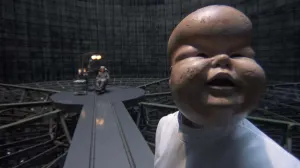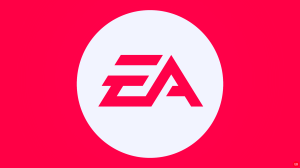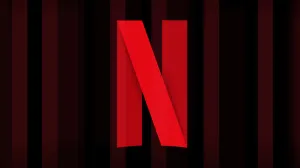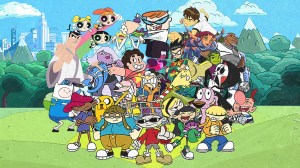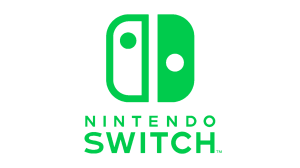
Atari has been around the video game industry for quite some time now, and it’s been in the home video game console market for –ulp! – 40 years. That’s quite a bit of time, and it’s come a long way since then, from producing simple 4-bit style graphics with the Atari 2600 to moving up to 64-bit with the Atari Jaguar, to preparing to make history again with the AtariBox.
Videos by ComicBook.com
So, to celebrate its legacy, we’re taking a look back at some of the company’s most noteworthy consoles. Some have certainly fared better than others, but there’s no question that they helped pave the way for Atari’s success over the years, and the AtariBox could certainly bring it back to form!
Atari 2600

Let’s start with the console that started it all, the Atari 2600, or the Atari VCS in some circles. Released in 1977, the system thrived for several years, thanks to original games like Swordquest and Combat, as well as arcade ports of games like Missile Command, Asteroids and Moon Patrol.
That said, the system couldn’t quite do it all, as some of the games faltered. The home translation of Pac-Man, for example, was abysmal. And E.T. the Extra Terrestrial is indirectly tied in to the video game crash of 1983, though there are other factors to take into consideration as well, like saturation on the market overall.
But the system did extremely well in its years on the market, and pushed Atari to try out new hardware over the years – more advanced hardware, at that.
Atari 2700

Yes, at one point in time, there was an Atari 2700 in the works, a prototype console with wireless controllers (operated with radio signals) and enhanced games, as well as full backward compatibility with Atari 2600 games and peripherals. The system was eventually scrapped, but a dozen prototypes ended up being made, ending up in the hands of a few avid collectors. And as you can see from the story link above, one even managed to sell on eBay for some big bucks. So if you have an Atari 2700 lying around, hang onto it – it’s a piece of game history.
Atari 5200

In 1982, Atari tried its luck on the home market once more with the Atari 5200, hoping to attract players with a newly designed set of controllers with a 360-degree non-centering joystick, along with a variety of buttons. But the big attraction was the games, as the arcade ports were closer in representation to the games they were emulating (like Pac-Man), and some of the original games were a treat.
However, the system was eventually scuttled in 1984 to pave the way for the Atari 7800, and matters surrounding the video game crash of ’83 certainly didn’t help the company. Still, some collectors prefer this system to the 2600, mainly due to its more advanced set-up.
Atari 7800

The Nintendo Entertainment System brought back the gaming market in a huge way in 1985, prompting Atari to give things a try again with its more advanced Atari 7800. Featuring a plethora of new titles and improved visual hardware, the system was originally meant to launch in 1984, but Atari opted to delay it while it was in the midst of a sale.
The system did pretty well, though it still had limitations due to the same audio chip from the Atari 2600. The company announced its discontinuation in 1992, along with its Atari XE home computer, and opted to give something else a try on the market – but it had plenty of plans for both home and handheld gaming.
Atari Lynx

Not just content on ruling the home market, Atari released the Atari Lynx in 1989 in the hopes of competing with the popular Game Boy system. Unlike Nintendo’s green screened handheld, the Lynx featured full color display, as well as being able to play vertically with some games, such as Klax.
It had a number of original titles, as well as hit licenses like Batman Returns and Ninja Gaiden, and the company tried to attract fans with an even smaller model, the Lynx II. Unfortunately, it only ended up selling just over three million units, and soon faded away from the market. That said, there is a pretty strong following that still plays games on it, including ports of hits like Hydra and Raiden. And it’s fairly easy to track down a used system and games like…Kung Food. Yes, there’s a game called Kung Food.
Atari Jaguar

In 1993, Atari came roaring back to the home console market with the first truly dedicated 64-bit machine to play games on, the Atari Jaguar. The system saw a number of big hits released for it, including the hugely accepted Alien vs. Predator, as well as Tempest 2000 and ports of hit games like NBA Jam: Tournament Edition and Rayman.
It did well for a while there, but the system soon saw a decline in the face of greater competitors like the PlayStation and Nintendo 64. Atari tried to mix things up a bit with the odd-looking Atari Jaguar CD attachment (resembling…a toilet?), as well as more games and even a weird infomercial, which can be found below. Alas, it sold less than 250,000 units in its lifespan, and Atari didn’t take long to pull the plug.
Still, that infomercial though…
Atari Flashback

ATGames attempted to revive the Atari home market with an all-in-one system that came out on the market a while back, in the form of the Atari Flashback. Built like an Atari 2600 and packing in well over 50+ titles (including hits like Frogger and Pitfall!), the system sold pretty well for its $70 price, and continued to be a hot commodity for years to come.
That said, the company is still improving upon the product, and will release not only a new Atari Flashback console later this month with even more games and tweaks, but also a handheld system that includes a number of popular titles – including a better-than-usual Pac-Man port.
AtariBox

Now comes the big question – what’s next for Atari? Well, it appears to be the AtariBox, a console that’s shrouded in mystery and leaving us wondering what it could possibly entail. It will no doubt have a number of digital titles in tow, including classic Atari games and some possible new entries, but outside of that – and its sleek look – your guess is as good as ours when it comes to seeing what it has to offer. Still, Atari has a lot of confidence in it, and it does look great, so who knows? The company could very well find its place in the console market once again.
If the price is right, that is…

